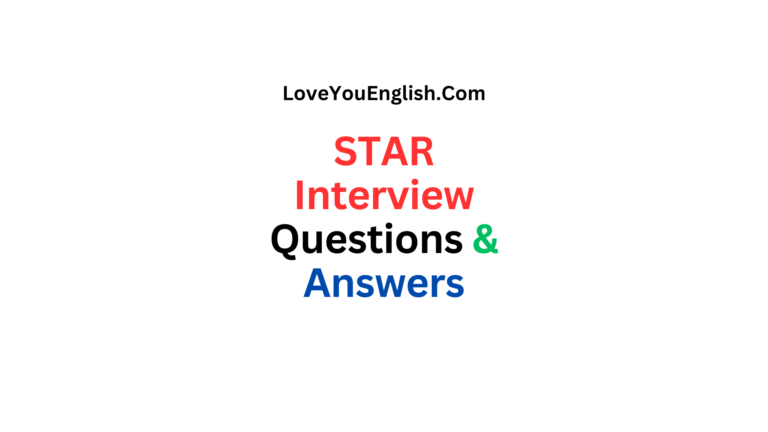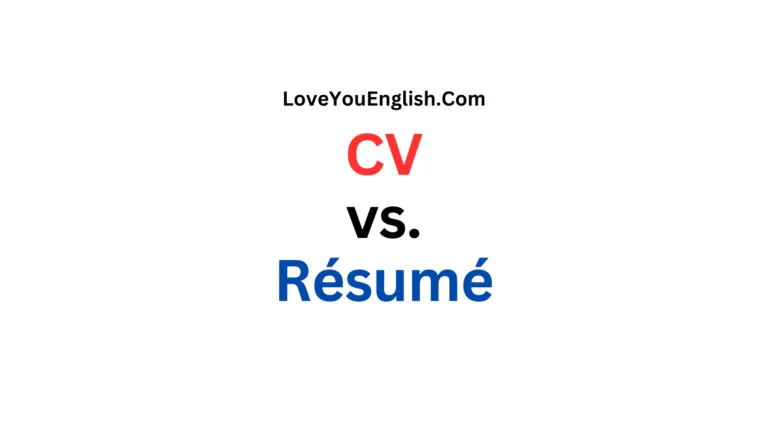How to Update Your Résumé for a Career Change
Switching careers can be both thrilling and scary.
One of the most important things to do is to update your resume to show your new career goals and highlight your skills that can be used in different jobs.
A good resume can really help you get noticed by employers and get interviews for your new career.
This guide will help you update your resume for a career change and give you useful tips to help you stand out from other job seekers.
Start with a Clear Objective
When changing careers, it’s essential to begin your résumé with a clear and concise career objective or summary statement.
This section should immediately communicate your new career goals and highlight the value you can bring to potential employers in your target industry.
Tips for crafting an effective objective:
- Keep it brief (2-3 sentences)
- Clearly state your new career goal
- Highlight your most relevant skills and experiences
- Emphasize what you can offer to potential employers
Example: “Experienced project manager transitioning to a career in environmental conservation. Seeking to leverage strong organizational and leadership skills to contribute to sustainability initiatives and wildlife protection programs. Committed to making a positive impact on the environment through data-driven decision-making and stakeholder collaboration.”
Identify and Highlight Transferable Skills
One of the most critical aspects of updating your résumé for a career change is identifying and showcasing your transferable skills.
These are skills that you’ve developed in your current or previous roles that can be applied to your new career path.
Steps to identify transferable skills:
a. Research your target industry and job roles
b. Make a list of the skills required in your new field
c. Review your work history and identify skills that match those requirements
d. Highlight these transferable skills prominently in your résumé
Common transferable skills:
- Communication (written and verbal)
- Leadership and team management
- Problem-solving and critical thinking
- Project management
- Time management and organization
- Adaptability and flexibility
- Customer service
- Data analysis and interpretation
- Creativity and innovation
When describing your work experience, focus on achievements and responsibilities that demonstrate these transferable skills.
Use action verbs and quantifiable results to make your accomplishments more impactful.
Explore more interesting topics:
- Common Job Interview Questions and How to Answer Them
- Can English Help You Get That Promotion at Work?
- 10 Common Interview Questions and Answers in English
- 6 Ways to Build Confidence at Work
- How to Prepare for a Job Interview in English
Reorganize Your Résumé Format
Traditional chronological résumés may not be the most effective format for career changers.
Consider using a functional or combination (hybrid) format to highlight your relevant skills and experiences.
Functional Résumé:
This format organizes your experience by skill categories rather than chronological work history.
It’s particularly useful for career changers as it allows you to showcase relevant skills without drawing attention to the lack of direct experience in your new field.
Structure of a functional résumé:
- Contact information
- Career objective or summary
- Skills summary (organized by relevant skill categories)
- Work history (brief list of employers and positions)
- Education and certifications
Combination (Hybrid) Résumé:
This format combines elements of both chronological and functional résumés. It allows you to highlight your skills while still providing a chronological work history.
Structure of a combination résumé:
- Contact information
- Career objective or summary
- Skills summary
- Work experience (with emphasis on transferable skills and achievements)
- Education and certifications
Choose the format that best showcases your strengths and aligns with your new career goals.
Tailor Your Work Experience Section
When describing your work experience, focus on aspects that are most relevant to your new career path.
Emphasize projects, achievements, and responsibilities that demonstrate your transferable skills and potential value in your target industry.
Tips for tailoring your work experience:
- Use industry-specific keywords from job descriptions in your target field
- Highlight achievements that showcase problem-solving, leadership, or other relevant skills
- Quantify your accomplishments with specific metrics and results
- Focus on experiences that demonstrate your ability to learn and adapt quickly
Example: Instead of: “Managed a team of 10 sales representatives”
Try: “Led a cross-functional team of 10 members, improving communication processes and increasing overall productivity by 25%, demonstrating strong leadership and collaborative skills applicable to project management in the environmental sector”
Emphasize Relevant Education and Training
If you’ve taken courses, attended workshops, or obtained certifications related to your new career field, make sure to highlight these prominently on your résumé.
This shows your commitment to your new career path and your willingness to learn and grow.
Tips for showcasing education and training:
- List relevant courses, workshops, and certifications near the top of your résumé
- Include online courses and MOOCs (Massive Open Online Courses) if they’re relevant to your new field
- Mention any relevant projects or research you’ve completed as part of your education
- If you’re currently pursuing additional education or certification, include it with an expected completion date
Leverage Volunteer Experience and Side Projects
Don’t overlook the value of volunteer work, side projects, or hobby-related experiences that may be relevant to your new career.
These can demonstrate your passion for the field and provide concrete examples of your skills in action.
Tips for including volunteer work and side projects:
- Create a separate section for relevant volunteer work or side projects
- Describe these experiences using the same action-oriented language as your work history
- Highlight specific achievements and skills developed through these activities
- If possible, include links to projects or portfolios that showcase your work
Craft a Compelling Skills Section
A well-crafted skills section can quickly communicate your qualifications to potential employers and help your résumé pass through Applicant Tracking Systems (ATS).
Tips for creating an effective skills section:
- Include a mix of hard skills (technical abilities) and soft skills (interpersonal traits)
- Prioritize skills that are most relevant to your target industry and job roles
- Use industry-specific terminology and keywords from job descriptions
- Consider grouping skills into categories for easier readability
Example skills section for a career change to digital marketing:
Technical Skills:
- SEO/SEM
- Google Analytics
- Content Management Systems (WordPress, Drupal)
- Social Media Management (Hootsuite, Buffer)
- Basic HTML/CSS
Soft Skills:
- Strategic Planning
- Data Analysis and Interpretation
- Creative Problem-Solving
- Cross-functional Collaboration
- Adaptability and Quick Learning
Address Employment Gaps
If you’ve taken time off to prepare for your career change, be proactive in addressing any employment gaps on your résumé.
Strategies for addressing gaps:
- If you’ve taken courses or obtained certifications during this time, list them in your education section with dates
- Include any freelance work, consulting, or volunteer experiences during the gap
- In your cover letter, briefly explain how you’ve used this time to prepare for your career transition
Customize Your Résumé for Each Application
While you may have a “master” résumé that includes all your experiences and skills, it’s crucial to customize your résumé for each job application.
This allows you to emphasize the most relevant aspects of your background for each specific position.
Tips for customizing your résumé:
- Carefully review the job description and company information
- Adjust your career objective or summary to align with the specific role
- Reorder your skills and experiences to prioritize those most relevant to the position
- Use keywords and phrases from the job description throughout your résumé
- Tailor your achievements to highlight those most applicable to the role
Proofread and Format for Readability
A polished, error-free résumé is essential for making a good first impression, especially when changing careers.
Proofreading and formatting tips:
- Use a clean, professional font (e.g., Arial, Calibri, or Garamond) in 10–12-point size
- Ensure consistent formatting throughout the document (e.g., bullet points, headings, date formats)
- Use white space effectively to improve readability
- Keep your résumé to 1-2 pages, depending on your experience level
- Proofread multiple times for spelling, grammar, and punctuation errors
- Ask a friend or mentor to review your résumé for feedback and errors you might have missed
Develop a Strong Personal Brand
In addition to your résumé, consider developing a strong personal brand that aligns with your new career goals.
This can include creating a professional online presence and networking within your target industry.
Personal branding tips:
- Create or update your LinkedIn profile to reflect your new career goals
- Develop a personal website or online portfolio showcasing relevant projects and skills
- Engage in industry-specific online forums and discussions
- Attend networking events and conferences in your target field
- Consider starting a blog or contributing guest posts to industry publications
Prepare for Follow-up Questions
Remember that your updated résumé may raise questions about your career change during interviews.
Be prepared to discuss your motivation for the change, how you’ve prepared for the transition, and how your previous experiences make you a strong candidate for roles in your new field.
Tips for addressing career change questions:
- Develop a clear, concise explanation for your career change
- Emphasize how your diverse background brings unique value to the role
- Highlight specific examples of how you’ve applied your skills in new contexts
- Demonstrate your commitment to learning and growing in your new field
Consider Including a Cover Letter
Even if a cover letter is not required, including one can be particularly beneficial for career changers.
A well-written cover letter allows you to elaborate on your career transition, explain any gaps in your résumé, and make a compelling case for why you’re the right fit for the role despite your non-traditional background.
Tips for writing a career change cover letter:
- Address why you’re making the career change
- Explain how your background makes you uniquely qualified for the role
- Highlight specific transferable skills and experiences
- Demonstrate your enthusiasm and commitment to your new field
- Keep it concise (no more than one page) and tailored to the specific job and company
Conclusion
When you’re changing careers, it’s important to really think about how you update your resume.
You need to show off your skills and experiences in a smart way.
If you follow these tips, you can make a resume that shows potential employers how valuable you are in your new field.
Don’t forget that having different experiences can actually be a good thing, because it means you can bring new ideas and ways of solving problems to your new job.
Key takeaways:
- Start with a clear career objective that communicates your new goals
- Identify and highlight transferable skills
- Choose an appropriate résumé format (functional or combination)
- Tailor your work experience to emphasize relevant achievements
- Showcase relevant education, training, and certifications
- Leverage volunteer work and side projects
- Craft a compelling skills section using industry-specific keywords
- Address employment gaps proactively
- Customize your résumé for each application
- Proofread thoroughly and format for readability
- Develop a strong personal brand to support your résumé
- Prepare to discuss your career change in interviews
- Consider including a tailored cover letter
Your resume is super important because it’s the first thing employers see.
Make sure it shows off all the cool stuff you can do and what you want to do in the future.
If you have a great resume and a positive attitude, you’ll be ready for your new job. Good luck with everything!







